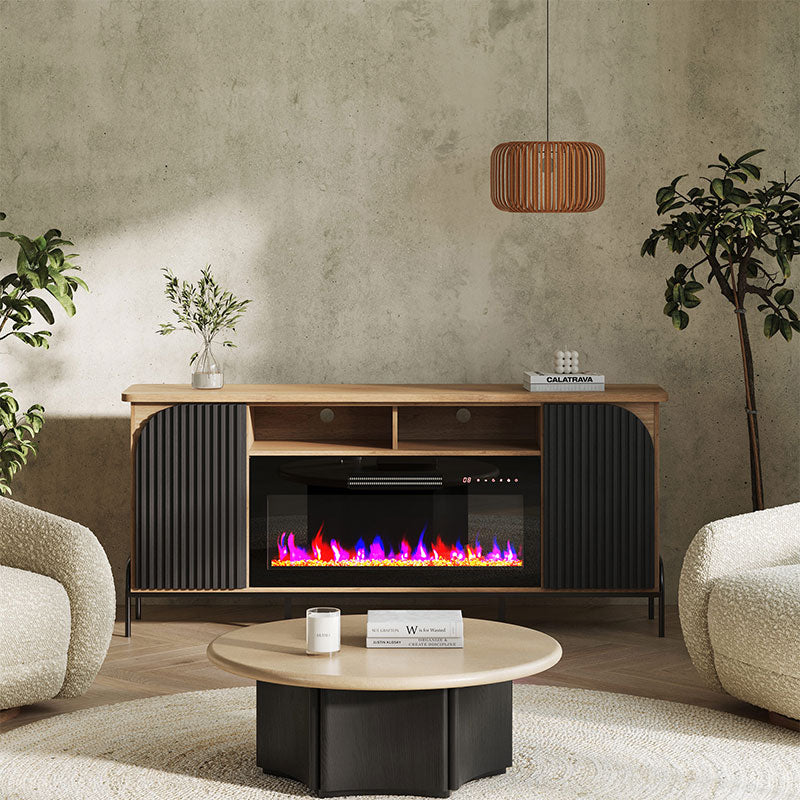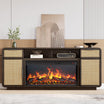Moving ranks among life's most stressful events, right up there with changing jobs or getting married. Between hiring movers, packing boxes, and managing deadlines, it's easy to feel overwhelmed.
Many people skip creating a furniture inventory, seeing it as just another task on their long to-do list. But this simple document does more than track your belongings - it helps you plan spaces, get accurate moving quotes, and file insurance claims if needed.
In this guide, you'll learn how to build a practical furniture inventory that makes your move smoother and more organized. We'll show you step-by-step methods that save time and reduce stress during your transition to a new home.
Why Make a Furniture Inventory?
Making a furniture inventory might feel like one more task on your moving to-do list. But this master plan saves you time and reduces stress by helping you track your belongings throughout the move.
Understand Your Goals
Your inventory list serves many purposes during a move. Understanding these goals helps you create the right level of detail for your needs.
Here's what a furniture inventory can do for you:
- Help you get accurate moving quotes and avoid surprise costs
- Guide movers on where to place items in your new home
- Make packing easier by grouping similar items together
- Serve as a checklist during loading and unloading
- Speed up the unpacking process
- Support insurance claims if items are lost or damaged
The more detailed your inventory, the better it works as a reference. Start by deciding if you need it for basic organization, insurance purposes, or to help you declutter before the move.
Getting Started with Inventory Prep Work
Before diving into creating your furniture inventory, taking a few preparatory steps will make the entire process more organized and efficient. A well-planned approach saves time and reduces stress during your move.
Declutter Before You List
Start by thoroughly evaluating your furniture collection. Ask yourself key questions about each piece: Do you regularly use it? Will it fit in your new space? Is it worth the cost and effort to move? Group items into four simple categories:
- Keep: Essential pieces you'll definitely move
- Sell: Items in good condition with resale value
- Donate: Usable furniture you no longer need
- Discard: Damaged or worn-out pieces
Decluttering first ensures your inventory focuses only on furniture worth moving and reduces overall moving expenses.
Choose Your Inventory Tool
Select a method that matches your comfort level and needs:
- Digital options: Spreadsheets (Google Sheets, Excel) offer flexibility and easy editing
- Moving apps: Tools like Sortly or Nest Egg provide features for photos and value tracking
- Traditional methods: Notebook or binder systems work well for simpler moves
Whatever method you choose, take photos of your lists as backup, and select a tool that balances functionality with ease of use.
Creating Your Inventory Step By Step
Now is the time to create a detailed list of your furniture and valuable items. Being thorough at this stage will give you a reliable reference for your move and help with insurance matters later.
Go Room by Room
The most effective way to build your inventory is to tackle one room at a time. Start with large pieces like beds, sofas, and tables in each space. Remember to include smaller items such as lamps, artwork, and rugs. Don't overlook items inside closets and drawers that you plan to move.
Always complete each room fully before moving to the next one. This methodical approach ensures nothing gets missed. If a large room feels overwhelming, start with a small space like a bathroom to build momentum.
Record Key Item Details
For each piece, you need clear identification and key information:
- Clear name (example: "70-inch farmhouse fireplace TV stand" rather than just "TV stand")
- Item description including color, material, and brand
- Quantity for matching pieces or sets
- Current estimated value
- Measurements for large furniture
Write down serial numbers for electronics and appliances. Also, note which room each item should go to in your new home. This information will guide movers during unloading.
Document Item Condition
Check each piece carefully for existing damage like scratches, dents, or stains. Be specific when describing condition issues; minor imperfections matter.
Take clear, dated photos of your items from multiple angles. Make sure to capture close-up shots of any existing damage.
Keep your photos timestamped, as this documentation proves the condition of items before the move. This careful record-keeping is essential for any potential insurance claims during the moving process.

Using Your Inventory Effectively
Your furniture inventory is most valuable when you actively use it throughout your entire move. Think of it as your moving command center that helps you stay organized, communicate with movers, and handle any insurance matters that may come up.
Connect Inventory to Packing Labels
A good labeling system turns your inventory into a practical tool. Start by giving each box a unique number that matches your inventory list.
Write this number next to the items inside it on your master list. Make sure to include these key elements in each box:
- Box number and destination room
- Basic description of contents
- Special handling instructions (if needed)
- Colored labels to identify different rooms
- "FRAGILE" marking when necessary
If you're tech-savvy, consider using digital inventory tools that let you create QR codes for your boxes. These codes can link directly to detailed lists of what's inside.
Keep your master inventory list in an essentials box that stays with you, not packed away in the truck.
Share Info with Your Movers
Good communication with your moving team starts with sharing your inventory list. Give them accurate details about major items, especially those that are heavy, fragile, or need special handling.
Including furniture dimensions helps movers plan truck space and identify potential challenges with doorways or stairs.
When reviewing the movers' official inventory (Bill of Lading), pay attention to these details:
- Accuracy of item count
- Condition notes for each piece
- Special handling requirements
- Any discrepancies with your list
Don't hesitate to speak up about any differences – getting corrections on their paperwork right away can prevent problems later.
Use for Moving Insurance Needs
Your detailed inventory serves as crucial protection if something goes wrong during the move. It proves ownership and documents item conditions before moving day.
Photos and detailed notes provide exactly what insurance companies need to process claims efficiently.
For insurance purposes, your inventory should include:
- Detailed condition descriptions
- Dated photographs of valuable items
- Estimated values for coverage decisions
- Serial numbers of electronics
- Pre-existing damage notes
Understanding the difference between basic liability and full value protection is important. If items get damaged, your thorough inventory makes the claims process much smoother.
Insurance companies are more likely to approve claims when you can provide clear documentation from before the move.
Inventory Use During and After the Move
Your furniture inventory becomes most valuable during the actual moving process and while settling into your new home. Keep the list handy to track items, verify their condition, and organize your space efficiently.
Check Items Loading and Unloading
As movers load the truck, check each item against your inventory list. This quick verification ensures everything makes it onto the truck. During unloading at your destination, carefully mark off items as they arrive.
Key actions during unloading:
- Inspect furniture condition against your pre-move photos
- Document any damage to delivery paperwork before signing
- Take photos of damaged items immediately
- Report issues promptly to preserve your claim rights
Unpack and Set Up Efficiently
Your inventory helps direct movers to place furniture in the right rooms from the start, saving you from moving heavy pieces later.
Instead of guessing which box contains what, check your inventory list for specific box numbers. This helps you prioritize unpacking essential items first.
Compare item conditions to your pre-move records and report any newly discovered damage promptly following the mover's claims timeline.
Keep Using It After Moving
The value of your inventory extends well beyond the moving day. Your detailed inventory serves several purposes:
- Updating home insurance coverage accurately
- Supporting general home organization
- Providing records for future item sales
- Documenting values for appraisals
- Assisting with estate planning through digital inventory apps
Store your inventory list in a safe place, ideally with digital backup copies. Consider updating it annually to maintain an accurate record of your belongings.
Move Forward with Confidence
Creating a furniture inventory takes time, but the benefits are worth it. Your detailed list becomes more than just numbers - it's a tool that helps you track and protect your belongings through every step of the move.
When you know what you have and where it's going, you can focus on settling into your new home. Your inventory helps keep everyone on the same page, from movers to family members. You'll face fewer surprises and have clear proof of your belongings' condition.
Think of your inventory as a map guiding you to a smoother move. With this preparation, you can handle your relocation with less stress and more control.
























Leave a comment
This site is protected by hCaptcha and the hCaptcha Privacy Policy and Terms of Service apply.